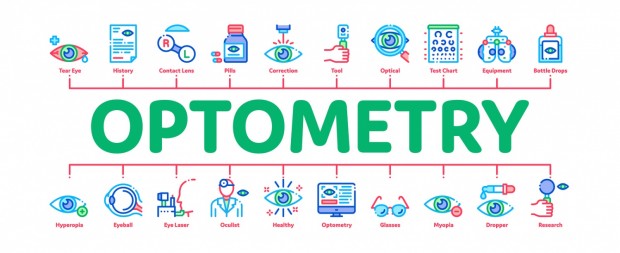New Technology Is Coming in Optometry
Technology has advanced quickly and this includes the field of optometry. With the rise of sophisticated technologies, eye doctors and ophthalmologists have been aided with new and improved techniques that have increased their effectiveness to take care of patients. Now, advances in imaging technology as drastically changing the amount of time that eye doctors spend taking measurements. This means that eye doctors are able to spend more time finding solutions to patients' problems instead of collecting data. With the advances in imaging technology, eye doctors are able to tailor treatment plans to meet the needs of their patients.
For example, there is now imaging technology that can create a 3D picture of what is happening behind someone's eyes. This allows the eye doctor to get a more detailed picture of the structure and function of the eye of the patient. This enables the physician to make more accurate diagnoses.
Furthermore, there have also been advances in the field of automation in optometry. Now, there are tools that will automatically take pressure measurements of the patients' eyes. These pressure measurements are important because elevated ocular pressures are a sign of glaucoma, which is an ocular emergency that may rob a patient of his or her ability to see. Automated tools are user-friendly, meaning that regular staff can now take pressure measurements behind patients' eyes. This frees up the eye doctor to perform more consultations, helping more patients than ever before.
Of course, these are not the only advances made in the field of optometry. Mobile devices have become an indispensable part of ocular health in today's world. Now, eye doctors can use smartphones and tablets to enhance eye care services. This includes both on the provider's end as well as the patient's end, such as buying glasses online. With innovative tools, eye care professionals can make ocular examinations more efficient and accurate than ever before. Leveraging software that is present on both Android and iOS devices, doctors will be able to perform more detailed eye exams, provide tailored therapy, and can monitor the overall ocular health of their patients, preventing eye damage.
Visions of the future of optometry include doctors carrying displays that are mounted on their heads. This device will include ocular health technology that might replace the larger versions that are used in clinics today. This could enable doctors to provide ocular healthcare to patients in remote areas more easily.
Speaking of wearables for eye care, this is already an important technology in the field of medicine. Other fields use wearable technology to track the vital signs of patients including heart rate, respiratory rate, oxygen saturation, blood pressure, and more. The next wave of wearable devices is going to help patients correct eye health problems, such as refractive issues. The future is going to include smart contact lens systems that will be able to help patients fix their refractive errors in real-time. These smart lenses might be fitted with an artificial iris that can help patients who have sustained traumatic eye injuries or those that have been diagnosed with congenital diseases.
No matter how far technology advances in the field of optometry, nothing is going to replace the clinical judgment of the physician. It is always going to be necessary to have an eye doctor controlling these devices, interpreting the results, and making clinical care decisions. Evidence-based medicine is always going to be the top priority when it comes to the field of healthcare. These technological advances are only going to help doctors make faster, more accurate decisions. This saves time, money, and lives.
See Now: NASA's Juno Spacecraft's Rendezvous With Jupiter's Mammoth Cyclone
* This is a contributed article and this content does not necessarily represent the views of scienceworldreport.com





Join the Conversation